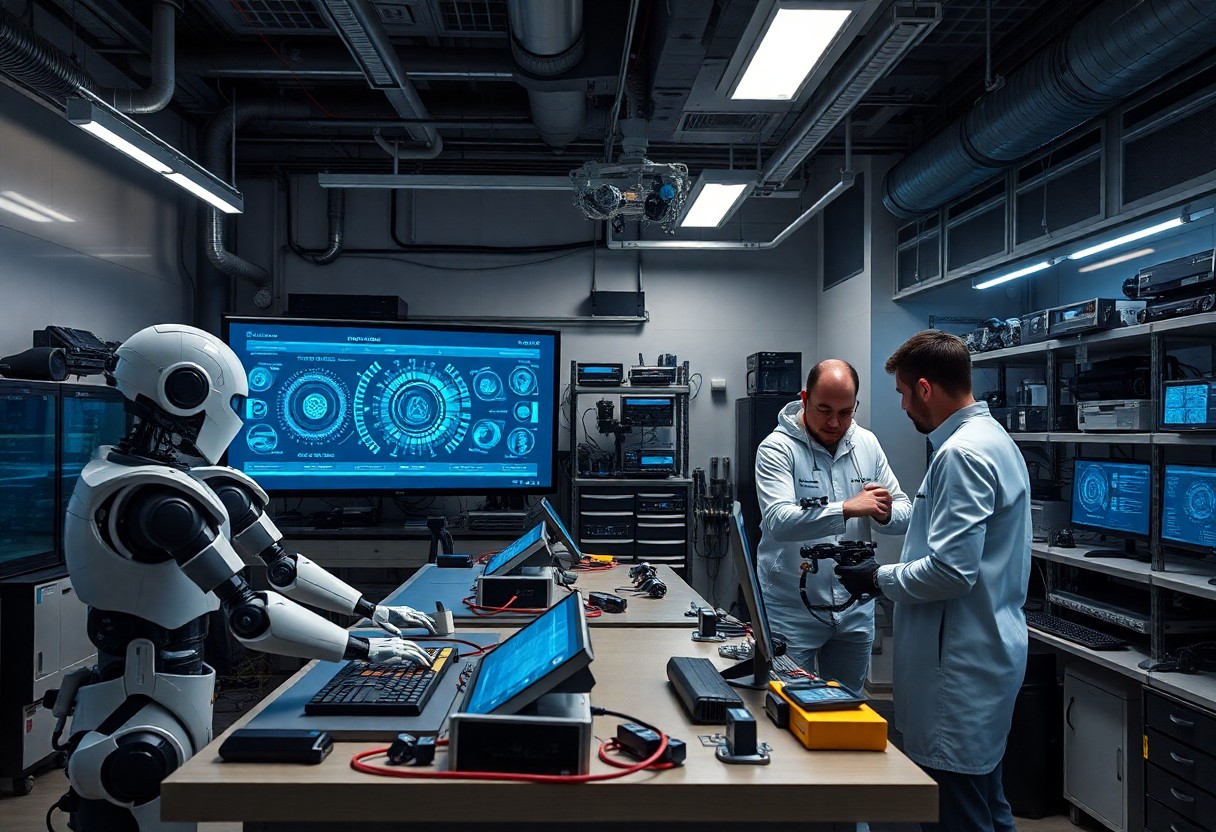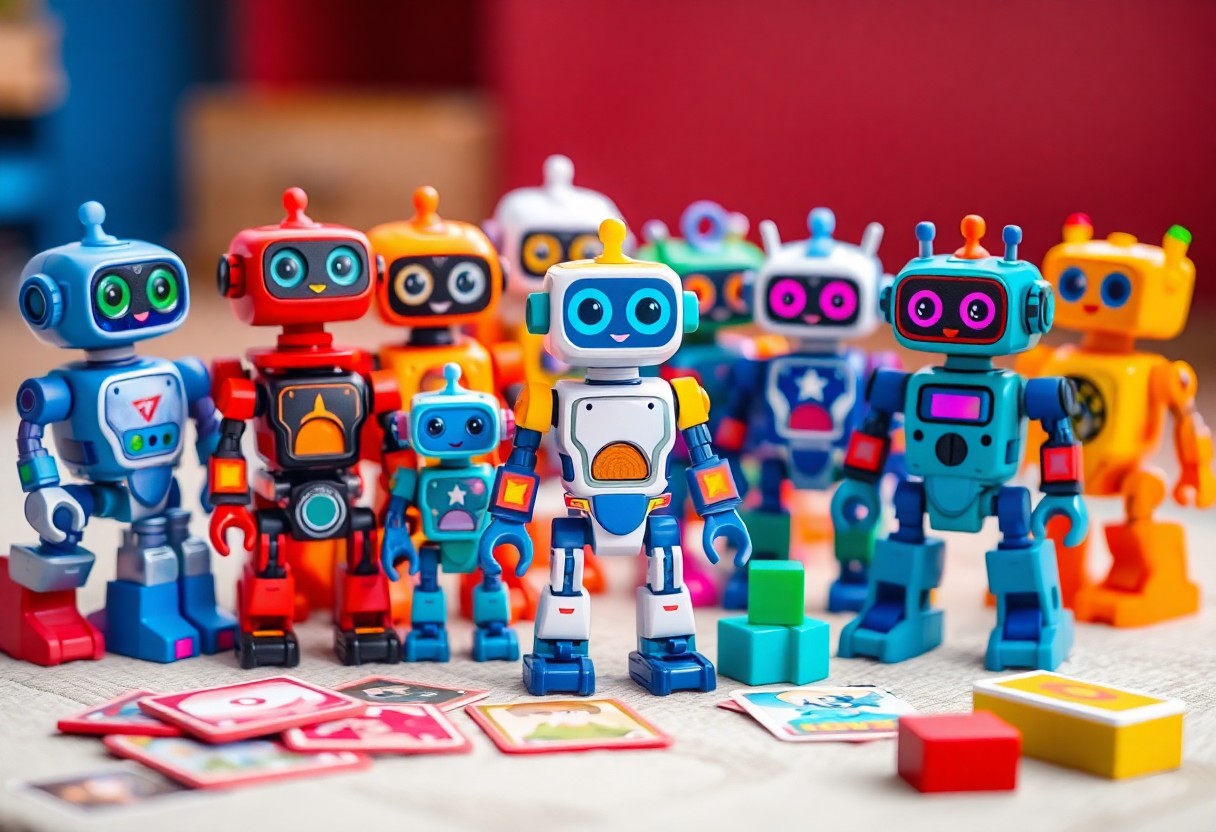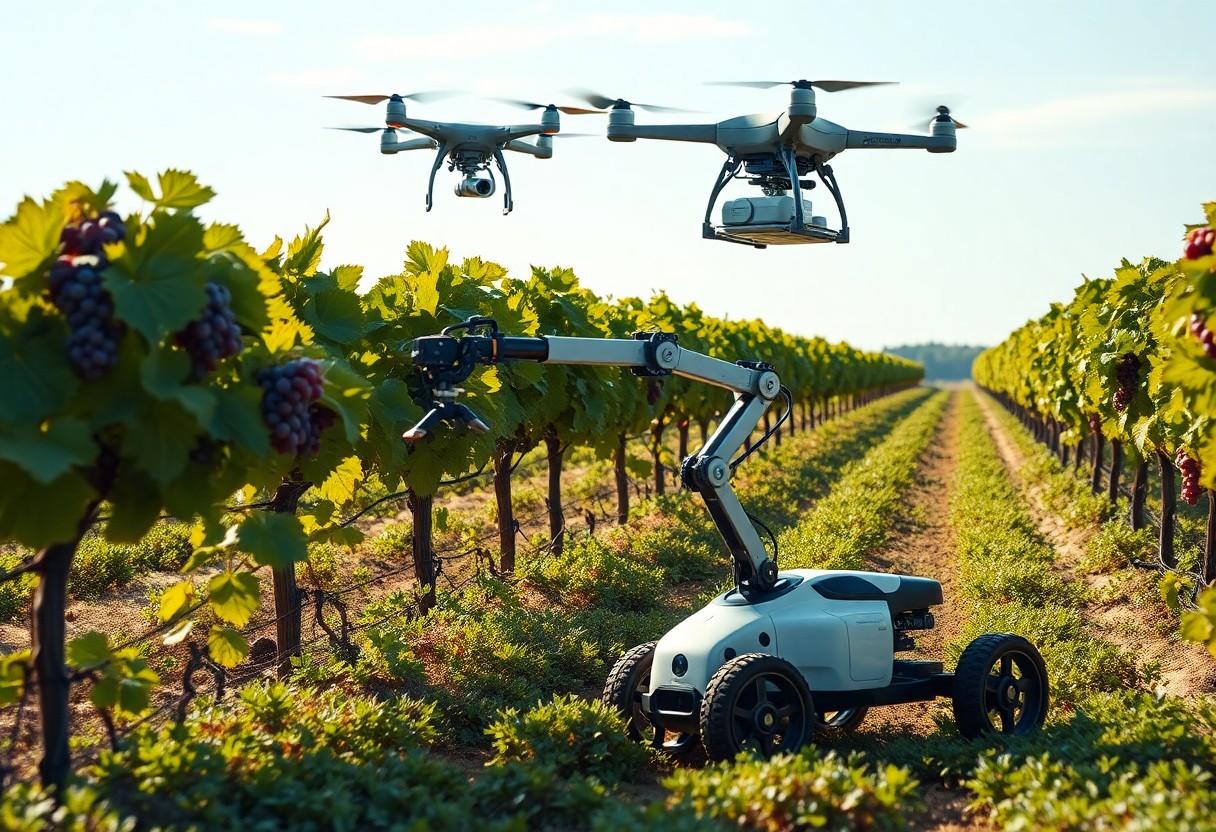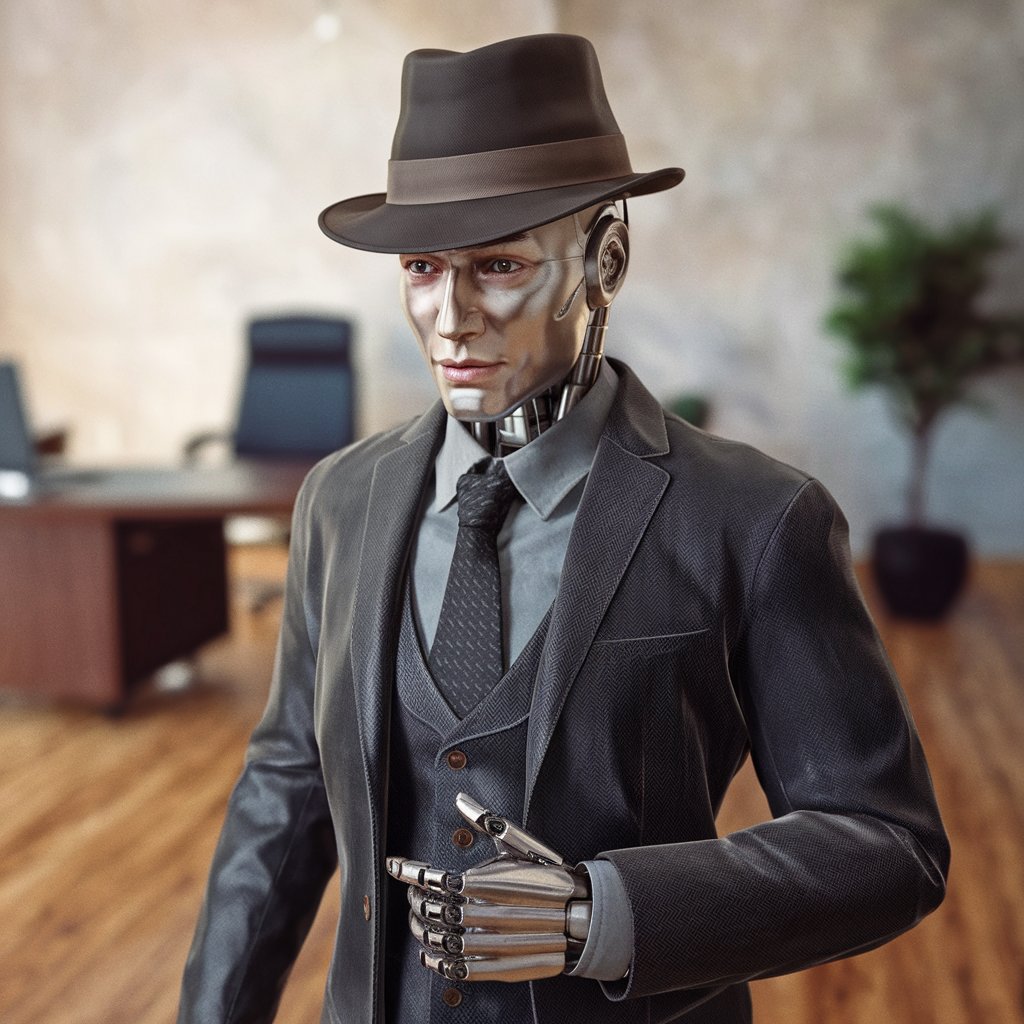Just as advancements in artificial intelligence have transformed the digital landscape, leading tech companies are now pivoting toward robotics, expanding their expertise from software to tangible, intelligent machines. You might wonder how this shift impacts various industries and your daily life. As these AI giants innovate, they are developing sophisticated physical agents that enhance efficiency and productivity, paving the way for a future where robotics seamlessly integrates with our environment.
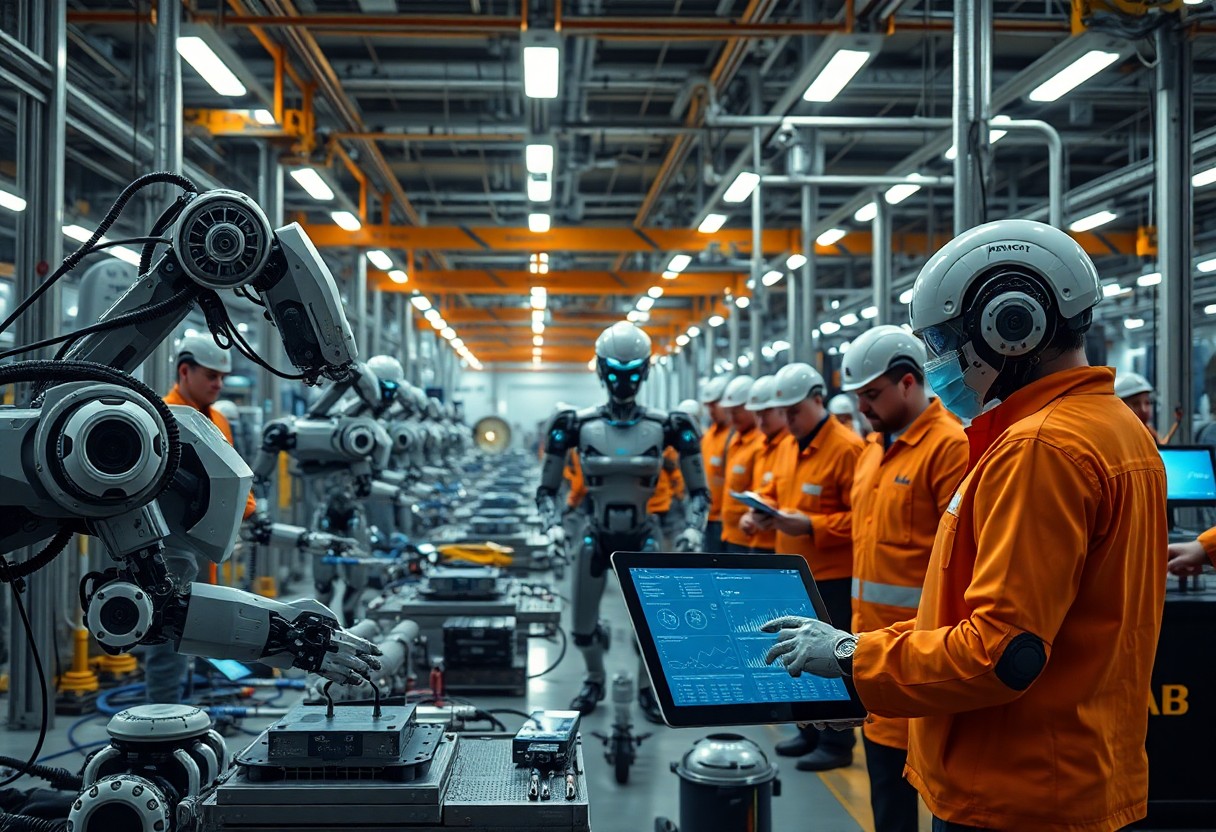
The Evolution of AI in Robotics
Historical Context
The journey of AI in robotics traces back to the mid-20th century, when pioneers like Alan Turing and John McCarthy laid the groundwork for machine intelligence. Early robotic systems were limited, relying on rudimentary programming and mechanical components. Your understanding of this timeline helps appreciate the complexity behind today’s sophisticated robots, which are now capable of learning and adapting in real time.
Milestones in AI Robotics Development
Significant milestones have marked the evolution of AI in robotics, with achievements such as the invention of the first industrial robot, Unimate, in the 1960s, and the introduction of autonomous vehicles in the 2000s. Each of these breakthroughs has pushed the boundaries of what robots can do, melding software intelligence with physical capabilities.
The development of AI in robotics hit several key milestones that have shaped its current landscape. For instance, the introduction of deep learning algorithms in the 2010s enabled robots to process vast amounts of data, improving their vision and decision-making capabilities. Boston Dynamics revolutionized mobile robotics with its agile robots, such as Spot, showcasing impressive maneuverability and autonomy. Additionally, the DARPA Robotics Challenge in 2015 spurred innovations in human-robot interaction and emergency response. These advancements showcase your own growing reliance on AI-powered robots to tackle complex tasks across various industries, highlighting robots’ transition from mere tools to intelligent collaborators.
Major Players in AI Robotics
Today’s robotics landscape is shaped by a mix of established tech giants and innovative newcomers, each bringing their own expertise and vision. Companies such as Google, Amazon, and Tesla are leveraging their vast resources and deep learning capabilities to advance robotic technologies, while traditional automation firms continuously evolve to integrate AI-driven solutions. This confluence of expertise is streamlining processes across industries, from manufacturing to healthcare, enhancing the efficiency and capabilities of robotic systems.
Industry Leaders: A Brief Overview
Industry leaders in AI robotics are at the forefront of technological advancements, developing systems that redefine productivity and usability. For instance, Boston Dynamics specializes in dynamic robots like Spot and Atlas, combining mobility with machine learning. Meanwhile, companies such as Amazon are utilizing AI to enhance robots used in logistics, optimizing warehouse operations and delivery processes while maintaining accuracy and speed.
Emerging Startups and Innovators
A wave of startups is disrupting the AI robotics sector with innovative solutions tailored for specific niches. These companies often focus on integrating AI with robotics for sectors like agriculture, healthcare, and logistics. For example, companies like Agrobot are innovating in farming robotics, facilitating precision agriculture, while others, like Fetch Robotics, are enhancing autonomous material handling in warehouses.
Emerging startups are not only entering the market with fresh ideas but also filling gaps left by larger companies. For instance, companies such as Formic Technologies are revolutionizing factory automation without requiring large capital investments, democratizing access for smaller manufacturers. Similarly, in the healthcare sector, organizations like Diligent Robotics are creating robots that assist healthcare staff, highlighting the versatility and necessity of AI in robotics across various fields. Your understanding of these innovators will help you appreciate the dynamic shifts occurring within the industry.
Key Technologies Driving AI Robotics
Multiple technologies converge to fuel advancements in AI robotics, reflecting a transformative shift in capabilities. Key innovations in machine learning, computer vision, and the integration of IoT with edge computing play vital roles in enhancing robots’ operational efficiency and intelligence. You can expect a more collaborative and responsive interaction between machines and humans, redefining applications across sectors like manufacturing, healthcare, and logistics.
Machine Learning and Computer Vision
Machine learning and computer vision act as the backbone of AI robotics, enabling machines to learn from data and interpret their environments accurately. You’re witnessing systems that can adapt and optimize their actions based on visual inputs, leading to substantial improvements in tasks such as navigation and object recognition. This technological synergy allows robots to interact more intelligently with their surroundings.
Integration of IoT and Edge Computing
The fusion of IoT and edge computing enhances robots by providing real-time data processing and connectivity. Embedded sensors capture crucial information from their environment, while edge computing facilitates instant analysis, minimizing latency. As a result, robots can respond swiftly to changes, streamlining operations and improving overall efficiency in real-time.
Integrating IoT with edge computing transforms how robots function, enabling them to process information locally rather than relying solely on cloud computing. For instance, in a manufacturing setup, a robot equipped with IoT sensors can monitor machinery performance and immediately address anomalies, thus minimizing downtime. This approach not only enhances operational efficiency but also supports better data privacy by limiting the need for continuous cloud connections. As machines become more autonomous, their ability to make timely decisions based on immediate data feeds will propel innovations across various industries.
Applications of AI in Robotics
AI integration across various sectors showcases robotics’ potential to revolutionize industries, enhancing efficiency and accuracy in tasks previously performed by humans. Your experience with robotics will likely expand into domains such as manufacturing, healthcare, logistics, and entertainment, where advanced algorithms enable robots to execute complex operations with precision and adaptability.
Manufacturing and Automation
In manufacturing, AI-driven robots streamline production lines, increasing throughput and reducing operational costs. You may find systems like collaborative robots (cobots) working alongside humans, handling tasks such as assembly, welding, and quality inspection. For instance, companies like Fanuc and KUKA leverage AI for predictive maintenance, ensuring optimal performance and minimal downtime.
Service Robots and Consumer Applications
The rise of service robots in consumer applications illustrates the growing interaction between technology and daily life. Robots such as autonomous vacuum cleaners and delivery drones are increasingly part of your home and community, enhancing convenience. These innovations often rely on machine learning for navigation and task execution, making them smarter and more efficient with each use.
Service robots are transforming consumer experiences by offering personalized assistance and efficient solutions for routine tasks. Examples include smart home devices, which adapt their functionality based on your preferences, and robot assistants in retail settings that guide customers through stores. Robots deployed in healthcare are also noteworthy, where they assist in surgeries or facilitate elder care, allowing for enhanced patient outcomes and relief to caregivers. These applications indicate a shift toward a more automated lifestyle, fostering a seamless integration of AI robotics into your daily activities.
Challenges and Ethical Considerations
As AI giants pivot towards robotics, you must grapple with the myriad challenges and ethical implications that arise. These issues range from technical hurdles to profound societal questions about the deployment of intelligent machines. Addressing these concerns is vital for fostering public trust and ensuring responsible innovation. For more insights, explore AI Agents in Robotics: The Next Frontier in Physical ….
Safety and Reliability Issues
Ensuring the safety and reliability of robotic systems becomes paramount as AI technology evolves. You may encounter concerns regarding malfunctioning robots that could cause accidents or injuries, particularly in environments like factories and public spaces. Rigorous testing and regulatory standards are necessary to mitigate these risks and build confidence in AI applications.
Ethical Implications of Autonomous Machines
The rise of autonomous machines poses substantial ethical dilemmas that you need to consider. Questions regarding accountability when AI systems make life-altering decisions become increasingly complex. For instance, if a self-driving car is involved in an accident, you may ponder who bears the responsibility: the manufacturer, the software developer, or the owner.
Exploring the ethical implications of autonomous machines highlights the significant moral responsibilities tied to their deployment. As AI systems gain autonomy, your role shifts from mere users to active participants in navigating moral quandaries. For example, in healthcare, robotic surgery can improve outcomes, but ethical concerns arise regarding patient consent and the extent of machine intervention. The broader societal implications demand a robust framework that balances innovation with ethical stewardship, ensuring these technologies serve the best interests of humanity.
Future Trends in AI Robotics
The landscape of AI robotics is rapidly evolving, with trends indicating a strong shift toward greater autonomy, enhanced human-robot collaboration, and advanced sensory capabilities. These advancements are expected to lead to versatile robots capable of performing complex tasks in various environments, from healthcare to manufacturing, elevating productivity and innovation across sectors.
Predictions for Technological Advancements
In the coming years, you can expect breakthrough innovations in AI robotics, particularly in areas like machine learning algorithms, which will enhance robots’ decision-making abilities. Moreover, the integration of 5G technology will facilitate seamless real-time communication between robots, enabling them to work collaboratively and respond to dynamic environments more efficiently.
The Role of AI in Shaping Future Societies
AI robotics will play a transformative role in how you perceive work and daily life, as these physical agents take on routine tasks, allowing you more time for creative and strategic endeavors. This shift could lead to new job creation in tech and support sectors, while also raising questions about ethics and dependency on intelligent machines.
As AI robotics become more integrated into society, they will redefine relationship dynamics between humans and machines. You’ll find that tasks once thought to require uniquely human skills, like empathy or nuanced decision-making, are being undertaken by robots. The result is a need for new education frameworks that emphasize skills complementary to AI, preparing you for a future where collaboration with intelligent agents is commonplace. This dynamic reshaping of the workforce could also spur discussions around policy, ethics, and equality, ensuring that while you benefit from enhanced productivity, societal implications are thoroughly considered.
To wrap up
Conclusively, as AI giants expand their focus from software intelligence to robotics, you must consider the implications for your industry and daily life. The transition to physical agents signifies a transformative era where predictive capabilities meet tangible applications, enhancing efficiency and productivity. Embracing these advancements will be imperative for staying competitive. By understanding the intersection of AI and robotics, you can better prepare for the evolving landscape that will inevitably impact your professional and personal responsibilities.

